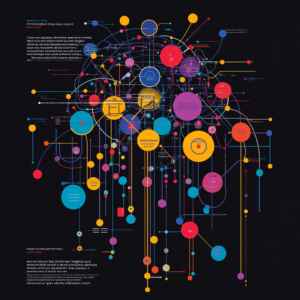
Navigating the Practical and Ethical Complexities of Integrating AI in Security Systems
As we roll deeper into this caffeinated age of digital advancement, artificial intelligence (AI) stands as a veritable titan in the realm of security. It’s not just that AI has become a household name; it’s insinuating itself into the very framework of how we protect our data and physical spaces. But here’s the kicker: with great power comes a plethora of ethical quandaries and practical challenges that we can’t afford to ignore. Buckle up, because we’re diving headfirst into the wild waters of AI in security, from the pitfalls of bias to the tightrope walk of privacy.
The Specter of Bias: The AI Achilles' Heel
First off, let’s get one thing straight: biases in AI are as real as morning coffee and equally as pernicious. Many like to think that algorithms are the cool rational kids in school, processing info without the messy baggage of human emotion. The truth, however, is that they’re often guilty by association. If the data used to train these systems is biased—perhaps reflecting a certain social or systemic prejudice—guess what? The outputs will likely mirror that nasty little fact.
Consider this sobering statistic: a survey from McKinsey & Company revealed that a staggering 40% of organizations have grappled with AI bias—yep, it’s not just your conspiracy theorist uncle that sees these patterns.
So, what’s the antidote? The mantra should be diversity and transparency. Organizations need to invest in broad, representative datasets while peeling back the layers of their algorithms to ensure accountability. After all, if our AI-powered watchdogs are just perpetuating old injustices, what’s the point of having them at all?
Striking a Balance Between Security and Privacy
Now let’s talk about the elephant in the room: the delicate balance between security and privacy. Picture this: you're in a world where AI-driven security systems are watching your every move. That means they can swiftly detect suspicious activities, but at what cost? Do we really need AI peeking into our online bakery shopping habits or chronicling our office chats?
This isn’t just a theoretical question; it’s the nuance we must confront daily. The implications of overly intrusive surveillance can devolve into a dystopian nightmare, quietly undermining the very freedoms we cherish. The goal here isn’t to engage in a wild free-for-all where privacy goes to die; rather, it’s about configuring these systems to effectively sweep for threats while gently tiptoeing around individual rights.
The Accountability Maze: Who’s to Blame?
As AI systems get ever more autonomous—blocking IPs and quarantining files—it raises the harrowing question: who’s accountable when things go awry? It’s a bit like asking who’s at fault when a self-driving car crashes. Is it the manufacturer, the software engineer, or the end-user? The complexities compound when you consider that an AI-powered firewall that mistakenly blocks critical services can throw entire businesses into chaos.
This is where transparency rears its ugly and beautiful head. The “black box” nature of many AI models only adds more smoke to the already murky waters. When security professionals can’t decipher why an algorithm chose a particular action, the trust fracture only deepens. Curious minds want to know why the system acted as it did, and namely, could it happen again?
Data Security Risks: The Digital Minefield
Now, let’s not mince words: AI isn’t just a beacon of hope; it also comes with significant data security risks. From shadow AI—those sneaky, unsanctioned systems introduced by users—to data breaches that put sensitive information out in the wild, the list of potential threats is daunting.
In our digital playground, risks like membership inference and attribute inference attacks are lurking around every corner. This means that attackers can’t just pirouette into databases; they can extract valuable information from AI model outputs. The solution? A robust mix of encryption, differential privacy techniques, and regular audits—as stale as it may sound, it's essential.
Job Displacement: AI’s Unwelcome Shadow
The final piece of this puzzle involves the economic and job displacement concerns that come along with the shiny benefits of AI. While it’s true that AI bolsters our cyber defense capabilities, it also brings about a grim reality: some jobs might, well, disappear. For the cybersecurity professionals out there, staying relevant means adapting more quickly than a chameleon on a color-changing spree.
Organizations need to navigate these economic waters with care, balancing the advantages of AI implementation against the potential fallout for employees. After all, the very people who keep our digital fortresses standing might find themselves navigating jagged job markets soon.
Best Practices for a Secure AI Future
So how do we tame this wild beast called AI? Here are some sage recommendations to keep us on the straight and narrow:
- Data Handling and Validation: Make sure the data that feeds into AI models is diverse, accurate, and as free from bias as possible.
- Limit Application Permissions: Tighten the reins on AI permissions to keep unauthorized access and breaches at bay.
- Trustworthy Models and Vendors Only: Before getting entranced by flashy AI solutions, ensure they adhere to solid security standards and ethical guidelines.
- Diversity in Training Data: Again, representativeness matters; it’s not just a buzzword.
- Use AI-Driven Security Wisely: Leverage AI where it can genuinely enhance security, not replace critical human oversight completely.
- Continuous Monitoring and Response: Maintain vigilance through ongoing monitoring and have response plans at the ready for when—or if—things go awry.
Conclusion: An Ethical Tightrope
The journey with AI in security is a delightful yet perilous tightrope walk. While the benefits are tantalizing, the ethical and practical challenges are an ever-present reality that can’t be swept under the rug. We need to center our discussions around fairness, privacy, accountability, and transparency if we hope to chart a course toward a safer, more just digital environment.
So, are we ready to educate ourselves and make sense of this chaotic digital landscape? Join the conversation and stay ahead of the curve by subscribing to our Telegram channel: @ethicadvizor. Let’s unravel the mysteries of AI together!

